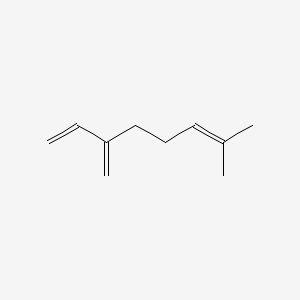| Authors | Title | Published | Journal | PubMed Link |
|---|---|---|---|---|
| Mitić-Culafić D et al. | Protective effect of linalool, myrcene and eucalyptol against t-butyl hydroperoxide induced genotoxicity in bacteria and cultured human cells. | 2009 | Food Chem. Toxicol. | pmid:19049815 |
| Abel C et al. | Floral and insect-induced volatile formation in Arabidopsis lyrata ssp. petraea, a perennial, outcrossing relative of A. thaliana. | 2009 | Planta | pmid:19322583 |
| Cheng SS et al. | Insecticidal activities of leaf and twig essential oils from Clausena excavata against Aedes aegypti and Aedes albopictus larvae. | 2009 | Pest Manag. Sci. | pmid:19115256 |
| Palacios SM et al. | Efficacy of essential oils from edible plants as insecticides against the house fly, Musca domestica L. | 2009 | Molecules | pmid:19471213 |
| Lee JH and Hong SK | Comparative analysis of chemical compositions and antimicrobial activities of essential oils from Abies holophylla and Abies koreana activities of essential oils from Abies holophylla and Abies koreana. | 2009 | J. Microbiol. Biotechnol. | pmid:19420993 |
| Kigathi RN et al. | Emission of volatile organic compounds after herbivory from Trifolium pratense (L.) under laboratory and field conditions. | 2009 | J. Chem. Ecol. | pmid:20013039 |
| Surratt JD et al. | Organosulfate formation in biogenic secondary organic aerosol. | 2008 | J Phys Chem A | pmid:18710205 |
| Qiao Y et al. | Characterization of aroma active compounds in fruit juice and peel oil of Jinchen sweet orange fruit (Citrus sinensis (L.) Osbeck) by GC-MS and GC-O. | 2008 | Molecules | pmid:18596659 |
| Barbosa LC et al. | Evaluation of the chemical composition of Brazilian commercial Cymbopogon citratus (D.C.) stapf samples. | 2008 | Molecules | pmid:18794790 |
| Russo EB | Cannabinoids in the management of difficult to treat pain. | 2008 | Ther Clin Risk Manag | pmid:18728714 |
Myrcene
Myrcene is a lipid of Prenol Lipids (PR) class. Myrcene is associated with abnormalities such as Hypomenorrhea, abnormal fragmented structure, Nephrosis, Renal tubular disorder and Kidney Diseases. The involved functions are known as Anabolism, Gene Expression, Protein Biosynthesis, Mutation and Selection, Genetic. Myrcene often locates in Plastids, Proboscis, Body tissue, Clone and soluble. The associated genes with Myrcene are TTPA gene, monoterpene synthase, Genome, 4S-limonene synthase and Homologous Gene. The related lipids are Pinene, Octanols, Membrane Lipids and Fatty Acids, Unsaturated.
Cross Reference
Introduction
To understand associated biological information of Myrcene, we collected biological information of abnormalities, associated pathways, cellular/molecular locations, biological functions, related genes/proteins, lipids and common seen animal/experimental models with organized paragraphs from literatures.
What diseases are associated with Myrcene?
Myrcene is suspected in Nephrosis, Kidney Diseases, Dehydration, Hypomenorrhea, Renal tubular disorder and other diseases in descending order of the highest number of associated sentences.
Related references are mostly published in these journals:
| Disease | Cross reference | Weighted score | Related literature |
|---|
No disease MeSH terms mapped to the current reference collection.
PubChem Associated disorders and diseases
What pathways are associated with Myrcene
There are no associated biomedical information in the current reference collection.
PubChem Biomolecular Interactions and Pathways
Link to PubChem Biomolecular Interactions and PathwaysWhat cellular locations are associated with Myrcene?
Visualization in cellular structure
Associated locations are in red color. Not associated locations are in black.
Related references are published most in these journals:
| Location | Cross reference | Weighted score | Related literatures |
|---|
What functions are associated with Myrcene?
Related references are published most in these journals:
| Function | Cross reference | Weighted score | Related literatures |
|---|
What lipids are associated with Myrcene?
Related references are published most in these journals:
| Lipid concept | Cross reference | Weighted score | Related literatures |
|---|
What genes are associated with Myrcene?
Related references are published most in these journals:
| Gene | Cross reference | Weighted score | Related literatures |
|---|
What common seen animal models are associated with Myrcene?
There are no associated biomedical information in the current reference collection.
